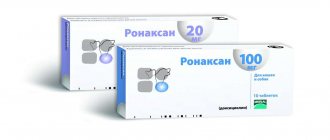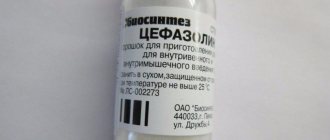First of all, all pet owners should remember that when choosing self-medication or visiting a veterinarian, if the animal is sick, you need to choose the latter.
Only an experienced specialist can give accurate advice on questions asked, make a diagnosis and prescribe the correct treatment. Sometimes the disease is serious, and self-treatment can only make the situation worse.
Veterinarians can prescribe metronidazole in the presence of such ailments as:
- postpartum infections;
- diarrhea;
- dysentery;
- mastitis;
- gingivitis;
- balanthiosis;
- stomatitis;
- necrobacteriosis.
Metronidazole in the form of an ointment can be used for various skin diseases.
Effect of the drug
Metronidazole is an antimicrobial and antiprotozoal drug with a broad spectrum of action.
The drug destroys the following pathogenic bacteria:
- Giardia;
- Trichomonas;
- amoebas.
Initially, the medicine was released for the treatment of people, but time of trials and experiments showed that the drug perfectly helps many animals: cats, dogs, horses. Parasites are much more common in animals than in humans. The opinion of most veterinarians is that any infection can be treated with Metronidazole. After 7-8 hours, 80% of the drug remains in the animal’s body.
general description
Initially, the synthetic antibiotic was developed by French scientists, but now it is produced by both domestic and foreign pharmacological companies. The medicine was developed for humans, but after a series of experiments and studies, it began to be successfully used in veterinary medicine, in particular for the treatment of cats.
In human pharmacies, the drug is sold in different dosage forms:
- pills;
- injection;
- rectal suppositories;
- ointment;
- gel.
For animals, Metronidazole is formulated as a white or yellowish powder. This dosage form can also be used for cats, but usually only large packages (from 1 kg) are available for sale, which are not practical to purchase for pets. The powder is commonly used on farms for pigs, cows and other large animals.
For cats, tablets are usually used. Externally, they can have an elongated or round shape. White tablets are packaged in blisters of 10 pieces. They are then placed in a cardboard box. Ointment or gel is rarely used, as it is suitable only for external use for skin pathologies.
Note! Metronidazole in the form of a solution is used for animals only in severe cases of the disease. Only intravenous administration of the drug is allowed, which must be done by a qualified specialist.
Dosing of the drug
Only an experienced veterinarian can answer the question of how much this medicine should be given to an animal. Under no circumstances should you make such decisions on your own, calculate proportions, measure grams.
There is an optimal dose of the drug:
- 10 mg of medication per 1 kg of animal weight;
- should be given 2 times a day.
However, for different animals the norms differ markedly. For example, cats need to be given 8-10 mg per 1 kg of weight, dogs - 15-20 mg per 1 kg of weight, 2 times a day.
When to use
According to the instructions, Metronidazole is prescribed for cats with various pathologies:
- with balanthiosis;
- with gingivitis;
- with aphthous stomatitis;
- with disentery;
- with trichomoniasis;
- with giardiasis;
- with necrobacteriosis;
- with necrotic mastitis;
- for infections after childbirth;
- for other diseases caused by bacteria that are sensitive to the drug.
Metronidazole can also be given to cats for diarrhea resulting from food poisoning. In any case, the drug should be used only after examining the animal and establishing an accurate diagnosis.
Important! Since the drug suppresses the animal’s immunity and has a toxic effect on the liver, it is strictly forbidden to use it for self-medication. Use is possible only as prescribed by a doctor.
Veterinarian advice
It just so happens that animals, in particular cats, are especially susceptible to various kinds of parasites. Therefore, it is necessary to regularly carry out prevention against worms.
If at a certain stage you are being treated with Metronidazole and there is a suspicion of enterobiasis, you need to simultaneously treat the cat for parasites, change the diet, even the way of life, if necessary. After all, when going outside, a cat exposes itself to many diseases, and for some time it needs to be isolated from others and kept completely clean.
Analogs
In the absence of metronidazole, antibiotics with a wider spectrum of action can be used:
One of the most important storage conditions is to avoid direct sunlight, since under the influence of the sun the medicine decomposes, loses its quality and becomes dangerous. The optimal storage temperature is no more than 20 °C.
The remedy is yellow in color. As the drug is eliminated from the body, the urine turns orange.
The tablets have an unpleasant, bitter taste. Therefore, it is necessary to inject the medicine into the animal’s mouth so that it does not feel the taste. To do this, it is better to administer the medicine with someone’s help, because cats can be aggressive and can scratch badly.
Metronidazole for cats with diarrhea
Unfortunately, cats often suffer from diarrhea, especially at an early age. The body's systems are not yet strong, they are not working at full capacity, and any, even harmless, change in diet can lead to gastrointestinal problems.
In cases where the cat’s health situation is critical and it is not possible to get to the nearest veterinary center or call a specialist at home, you should follow the rules:
- take the required amount of Metronidazole tablet, crush it;
- dilute with water, pour into a syringe and forcefully pour it into the cat’s throat, or mix the medicine with food and make sure the pet eats it.
Can be treated with Metronidazole intravenously. This is usually done in severe cases and in medical institutions. The duration of such treatment is 3 days. Then you can switch to tablets. If recovery occurs within these 3 days, it is better to stop using the medicine.
How is Metrogyl given?
Metrogyl is available in the form of capsules, tablets and solution for infusion. It can also be included in medications in the form of the active ingredient metronidazole benzoate, which tastes less bitter and is easier to administer to cats. An injectable form is also available, which your veterinarian will administer to your pet through an intravenous drip at the veterinary clinic.
Metrogyl should be taken orally with food. Liquid forms must be shaken thoroughly before use. Metrogyl is very bitter.
Follow the instructions when dosing the drug.
If you have difficulty administering medication to your cat, contact your veterinarian for advice.
This medicine begins to work within 1-2 hours. However, the clinical effect is not immediately noticeable. Gradual improvements are usually noticeable in cats after a few days.
Contraindications for animals
Despite the popularity and breadth of use of this medicine, there are some contraindications for its use in animals:
- During lactation, many components pass into the milk of a nursing cat. Milk not only loses its taste and becomes bitter, but also negatively affects the health of kittens. They may have problems with the gastrointestinal tract and allergies. In rare cases, even death is possible. It is better to isolate kittens from their mother during treatment and establish artificial nutrition. Only on the 3rd day after the last use of Metrondazole can you try to resume breastfeeding. As a rule, this is very difficult to do and the kittens have to be fed on their own until the end, that is, until they begin to eat on their own;
- Allergies in cats are a serious reason for refusal. Of course, it is better to discuss this issue with your veterinarian. If the situation worsens, corticosteroids may be required. Such parallel treatment may worsen the animal’s general condition.
- Taking Metronidazole during pregnancy can affect the condition of both the cat and her unborn kittens. The use of medication during pregnancy has not been fully studied, but there have been cases of severe deterioration in the cat’s health;
- Liver failure.
Possible limitations and adverse reactions
Metronidazole is contraindicated for four-legged pets if they have liver pathologies and hypersensitivity to the components of the antibiotic. Pregnant and lactating females should not use the antibacterial drug. With the correct dosage and following the veterinarian's recommendations, Metronidazole is well tolerated. But occasionally, during antibiotic therapy, a cat may develop the following adverse events that require discontinuation of treatment:
- allergic reaction;
- nausea;
- involuntary muscle contractions;
- profound disturbance of sensitivity.
Side effects
Side effects of Metronidazole:
- The gastrointestinal tract may be affected. Symptoms such as loss or decreased appetite, vomiting, nausea, constipation, and diarrhea will appear. In such cases, it is better to consult a specialist; he will tell you whether to continue treatment with this drug or stop.
- Changes in the nervous system. These are dizziness, depression or hyperactivity, drowsiness, general weakness. Usually cats have pronounced side symptoms. This makes it possible to react in time and consult a doctor.
- If during treatment your cat develops previously unknown problems with urination , it is better to stop treatment immediately and wait for the advice of a veterinarian.
- It would seem that fever during treatment cannot be a side effect. Unfortunately, this is true, and it is impossible to identify this connection on your own.
- If before the cat did not have any allergies , then during treatment the immune system weakens so much that even an allergy can cause enormous harm to your pet’s health. So if you notice nasal congestion, rash and itching, it is better to consult your doctor. Sometimes it is enough to simply stop using metronidazole. It is worth noting that such cases are quite rare, the medicine is well tolerated by animals.
Benefits and harms
While your pet is taking this drug, it is best to keep it at home.
The antibacterial drug Metronidazole, when taken orally, is rapidly and almost completely absorbed into the cat’s body. The medicine is effective against many pathogenic agents and in most cases is well tolerated. The harm from using Metronidazole for kittens is insignificant, the main thing is not to exceed the doses recommended by the veterinarian. Usually, after an antibacterial course, four-legged pets experience a decrease in the functioning of the immune system. In this regard, veterinarians recommend not taking your pet outside during treatment, as well as adjusting the menu and giving food products that help regulate the functioning of the gastrointestinal tract.
Instructions for use
According to the instructions for use, you should follow safety rules when working with the medication. Before working with the drug, you must wash your hands with soap. During the manipulations, you should not smoke, eat or drink drinks.
After finishing working with the medication, you need to wash your hands. It is recommended to avoid direct contact with the drug. If the antibiotic gets on the skin or mucous membranes, rinse the contact area with plenty of water. If the drug enters the body, you must immediately contact the nearest medical facility for help.
During treatment, it is necessary to follow the correct regimen for the animal. To avoid scratches and injuries from animals while taking the drug orally, you should wrap your pet in a towel or any soft cloth. For convenience, injections can be given by a veterinarian.
There are certain rules for treating diarrhea in an animal that should be followed:
- 1. crush half the tablet;
- 2. dilute the tablet with water;
- 3. pour the solution into the syringe;
- 4. pour the solution into the animal’s mouth or mix with food.
Storage conditions: at temperatures from -10 to +40 °C. The medicine should be stored out of the reach of children. Shelf life: three years from the date of production. After the expiration date, the use of the medication should be discontinued.










